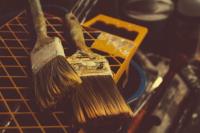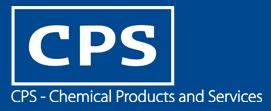 Add My Company
Add My Company
Sign In

William Shorter, Product Manager of CPS - Chemical Products and Services, takes a closer look at various screen reclaiming processes available today and some of the pitfalls that could cost you more than you think.
Screen reclaiming is a dirty job that is often given to the new starter or junior of the company, but should it? Inefficient screen reclaiming can have a negative impact on your bottom line. Poor cleaning, irrespective of your screen reclaiming method, can result in problems at later stages in the printing and screen coating process - this is where you could potentially see poor cleaning eat into your profits and disrupt production schedules.
Here we take a look at the advantages and disadvantages of options from the simplest manual cleaning process using a bucket and brush, all the way through to automatic cleaning machines.
Manual cleaning with a bucket & brush (Cleaning 1 to 20 screens per day):
Getting started out in screen printing and you’re probably going to be using the all too familiar bucket and brush system for cleaning your screens. This can be a very effective cleaning method, but profits can be eroded if you choose the wrong or inefficient cleaning products. Our experience and tests have demonstrated that using cleaning solvents with low evaporation rates work far more efficiently as they stay on the screen for longer to remove ink and stains. Cheaper solvents can also be far more volatile and hazardous for the operator and workplace.
Manual cleaning with a dip tank (Cleaning 20 to 30 screens per day):
Often considered as the next step on from buckets and brushes, the dip tank allows the chemicals to work on both the inks and the stencil while you are busy rinsing and cleaning another screen. The dip tank contains an all-in-one cleaner (a mixture of Aquawash and stencil remover) that breaks down both the stencil and ink at the same time.
However, be aware that the life expectancy of all-in-one cleaners is drastically reduced as the solids of ink and emulsion build up in the tank, requiring you to add more stencil remover to reactivate the cleaning performance.
Busy print shops can find the consumption of cleaning solvent is tripled in comparison to the bucket and brush method, as the cleaning solution is applied to the whole screen rather than just the area of mesh covered by ink and stencil. In addition, you must also factor in waste disposal costs, as the spent chemicals and solids can only be disposed of via a waste handling company.
It’s also worth remembering that if you’re removing plastisol inks with this process the stubborn stains that often remain after cleaning will also require the use of a haze remover, adding cost and time to your process.
Manual cleaning with a recirculation unit (Cleaning 1 to 30 screens per day):
Manual cleaning with low evaporation rate solvents in a recirculation unit is very economical compared to cleaning without recirculation. High quality, low evaporation screen wash solvents can be reused up to 10 times which significantly reduces solvent consumption and cost compared to single use of a solvent.
Further savings can also be made if the ink solids are separated out, as it increases the working life of the solvent and reduces the amount of waste to be disposed of.
This is often considered as the best choice for small to medium print shops.
Automated cleaning machine (Cleaning 1 to 100 screens per day):
The least labour intensive screen cleaning process but the most expensive.
There are many cleaning machine options available, from All-In-One to In-Line cleaning machines, with space and budget being the key factors in which option to choose. Today’s cleaning technology can extend the life of your cleaning solvent by automated sludge removal/filtration and condensing solvent vapours in the LEV back into your recirculation tank. It should be noted that All-In-One cleaning machines will tend to use more chemicals than an In-Line cleaning machine.
Whatever method of screen reclaiming you use, the following recommendations apply:
• Scrape off as much ink as possible from the screen before cleaning. This minimises the solid content and COD (Chemical Oxygen Demand) of the waste water during the reclaim process.
• Clean your screens as soon as possible after printing as this will help prevent stains from ‘setting in’ and achieve a cleaner screen.
• Ensure your concentrated cleaning chemicals are mixed at the correct ratios for effective cleaning.
• Use low evaporating emulsifiable cleaning solvents for cleaning the ink from the mesh.
• Make sure you have permission from your water authority to discharge chemicals and inks into the waste water system. This is your responsibility!
• Left over cleaning chemicals from dip tanks, recirculation units and automatic cleaning machines have to be disposed of by a waste handling company, they cannot be poured down the drain.
Screen cleaning can be a messy and dirty job and not surprisingly an unpopular one. It does however, have the potential to waste your money and lost time in production. Isn’t it time that you took a clean look at your screen reclaiming process? For more help and advice read our range of How to Guides.
For more information on Could you be wasting money with your screen cleaning process? talk to CPS - Chemical Products and Services
Enquire Now
List your company on FindTheNeedle.
